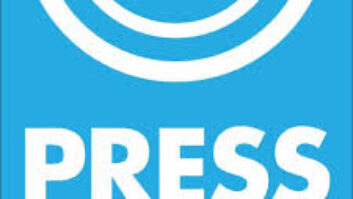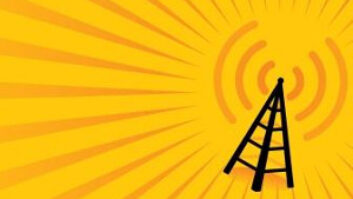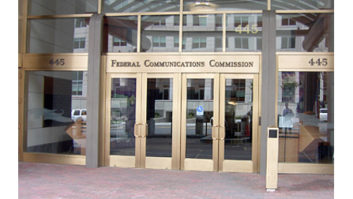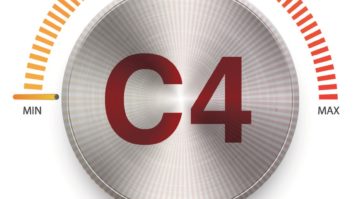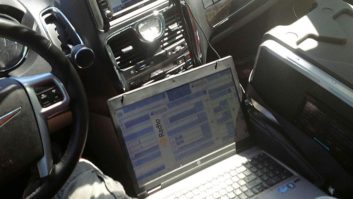
iStockphoto/Sergei Popov
Now that radio has its answer from the FCC about an FM IBOC power increase, groups and other station owners are determining whether they have the capital to raise digital power and how much of an increase their budgets and transmission chains can accommodate.
Observers contacted by Radio World believe the industry process to higher power will be a slow, steady one rather than a rush.
Opponents of the power boost have predicted that increases will be limited to a few high-power FMs owned by large groups and to noncoms in large markets. They think other FMs will wait to see how increases work out for early IBOC adopters and stations that purchase equipment with the increase in mind.
STAs
The Federal Communications Commission on Jan. 29 released an order allowing most of the approximately 1,500 stations that broadcast FM digital signals to increase digital power immediately by 6 dB, a four-fold power increase (see Feb. 10 issue).
Proponents asked for this voluntary increase so stations could match analog coverage areas and to make the digital signal more robust to strengthen multicast channel reception. The latter consideration is even more important now that four digital channels are possible.
The Media Bureau also established application procedures for stations that want to raise FM digital power more than 6 dB, up to a possible10 dB, a ten-fold increase from current levels.
The changes were to become effective 30 days after Federal Register publication, which had not occurred as of early March.
No sources contacted by Radio World could say for certain how many stations will make the leap. Some noncom FMs, including KUHF in Houston, KUVO in Denver and WAMU in Washington, had applied earlier for STAs. An NPR survey of member station managers in October which found that 70 percent plan to upgrade FM digital power within the next 12 months.
As of March 9, the commission had granted 24 STAs allowing higher digital power; it did not distinguish between commercial and noncommercial outlets in the figure it provided to Radio World. Of these, 19 were granted a 6 dB increase, one a 3 dB increase and four were granted the full 10 dB increase.
Bob Struble, president/CEO of HD Radio developer iBiquity Digital Corp., was pleased with the FCC’s January decision. He called it a “great example of government cooperating with the relevant industries to get something done. There was some debate on the tradeoff between power and interference. The various parties came together and came forth with a solution.”
He was referring to a compromise proposal between commercial radio and iBiquity on the one hand and NPR on the other, on which the commission largely based its order.
“With that compromise, the FCC got it [the order] out quickly. To me, that’s a good news story.”
Struble couldn’t say how many stations would go to higher power, saying the decision will be up to each station and group. He believes a “meaningful” number of stations will increase their FM digital ERP “but by no means will it be the majority or a huge number” right away.
“There are stations out there that have the headroom and can turn up the power. There are others that we know of that have plans to increase power.” Struble predicts a gradual transition.

The HD Radio power boost is intended, among other things, to help support next-gen data services. This is an ST Microelectronics-based HD Radio receiver development board shown at CES. Photo by Leslie StimsonExpense
Many of those who wait to implement an increase will do so because of the significant expense.
Milford Smith is vice president of radio engineering for Greater Media, one of 18 groups that filed a petition with the FCC in 2008 asking for the digital increase.
He is hopeful that “a number of stations” will increase FM digital power in 2010. Yet he said that for higher-power FMs, mainly Class Bs and Cs, the cost of increasing digital power from 20 decibels below carrier to –14 dBc or higher is substantial. For Greater Media, for example, Smith pegged the cost at $100,000+ per station, not including redundant facilities.
“Obviously we can’t ignore the economic realities of the moment; but the decision certainly provides certainty to both the broadcasters and the manufacturers that any power increases implemented and any equipment acquired to do so will not be rendered obsolete in the future,” Smith said.
He and other proponents hope stations that may have been waiting on the FCC decision will now be confident enough in HD Radio to “take the IBOC plunge with certainty as to the value of their hardware.”
Gary Kline, vice president of engineering and information technology at Cumulus Media, suspects many stations are evaluating whether they can “push the button” to raise power immediately, which depends on whether their transmitter has enough headroom. If not, “they are likely facing additional equipment upgrade costs. At that point it will come down to whether an investment will be made, and if so, when. Everyone has their own specific agenda and roadmap for technology/audience advancement as well as their individual capital dollar strategy for the year.”
Cumulus is going through this process call letter by call letter, he said.
Continental Electronics is one of four transmission manufacturers that joined in the group petition to the FCC for the power increase. Mike Troje, its domestic and international sales manager, believes many stations will seek to upgrade quickly to –14 dBc and a few to the full –10 dBc, but he fears that few station managers — and perhaps not mayn engineers — understand the costs related to even a 6 dB increase.
He predicts upgrades will take place gradually over three to five years as stations that have been on the fence come to see HD Radio as a viable business model, one made possible due to increased power.
Transmitter manufacturer Nautel Ltd. believes “a good number” of stations are poised to increase power because they planned for it in earlier equipment purchases, according to Market Development Manager Hal Kneller.
“The next group to consider the increase is stations who have been contacting manufacturers for information regarding upgrading the installed base which pre-dates the planning of elevated carrier levels,” said Kneller.
He said Nautel is receiving inquiries for such information but it’s hard to predict how quickly these stations would move forward. Reflecting interest in the topic, Nautel created a Web page dedicated to the power increase with industry information along with data specific to its products.
Fear of interference
Opponents of the increase cite fear of interference to adjacent analog stations — no small worry, since analog remains the primary method through which listeners hear radio and is likely to be so for quite some time, as the commission and even the power hike’s supporters have noted.
One contentious issue has been the recourse available to “victim” stations in interference cases.
The iBiquity-NPR compromise proposal suggested that at least three interference complaints from within the victim station’s affected contour should be required to trigger commission action, but the FCC decided to set the bar higher. It will require six complaints of “ongoing (rather than transitory) objectionable interference.”
Those complaints start a 90-day clock for the FCC to investigate and take action. If the Enforcement Bureau misses this deadline, the interfering station would have to begin reducing power in stages, all the way back down to the current –20 dBc, until the parties agree that the interference is gone.
Some observers worry that the commission will not put teeth into enforcing the interference remediation procedure.
Barry McLarnon is a former research engineer with Communications Research Centre, a government research lab attached to Industry Canada that conducts research in communications including broadcasting. Industry Canada handles technical aspects of broadcasting such as standards and allocations.
Now semi-retired and an independent consultant performing occasional contract work for CRC, McLarnon is “highly skeptical” that interference remediation will work.
“Up to now, the commission has maintained a hands-off policy regarding IBOC interference, and I don’t see that changing. I don’t buy the claim that there have been no interference complaints — I’ve heard otherwise.” He cited the case of WYSL, an AM station, but did not identify any FM cases.
The commission stated in its order that “since the commencement of 1 percent FM IBOC power operations in 2004, the [Media] Bureau has not received any well-documented complaints of interference to analog FM stations from digital signals,” nor had it received any since 2006 when FCC granted 15 experimental authorizations for some FMs to run at higher digital power, some with “as many as four first-adjacent channel short spacings.”
Radio World has reported on complaints about both AM and FM interference, but power hike supporters argue that those have occurred outside protected contours and/or cannot be replicated in testing.
Who’s Raising Their Power As of March 9 the FCC had granted 24 STAs to FMs to raise digital power.
KNDE, College Station, Texas — Bryan Broadcasting
KWAX, Eugene, Ore. — Univ. of Oregon
KQAC, Portland, Ore. — All Classical Public Media
KQHR, The Dalles, Ore. — All Classical Public Media
KUVO, Denver — Denver Educational Broadcasting
WJFK, Manassas, Va. — CBS Radio
KSKA, Anchorage — Alaska Public Telecom
KQOC, Gleneden Beach, Ore. — All Classical Public Media
KJAQ, Seattle — CBS Radio
KUWC, Casper, Wyo. — University Of Wyoming
WQYK, St. Petersburg, Fla. — CBS Radio
WRBQ, Tampa, Fla. — CBS Radio
KNBA, Anchorage — Koahnic Broadcast Corp.
WNPR, Norwich, Conn. — Connecticut Public Broadcasting
WPLN, Nashville, Tenn. — Nashville Public Radio
WQNY, Ithaca, N.Y. — Saga Communications
WGTD, Kenosha, Wis. — Gateway Technical College
KSCF, San Diego — CBS Radio
WSOU, South Orange, N.J. — Seton Hall University
KROQ, Pasadena, Calif. — CBS Radio
WMUZ, Detroit — WMUZ Radio
KKTR, Kirksville, Mo. — Truman State University
KTRM, Kirksville, Mo. — Truman State University
WRKS, New York — Emmis Communications
Source: FCC The problem, says McLarnon, is that the bar has now been set too high on required interference documentation. IBOC interference is “insidious,” “it is indistinguishable from noise, and thus seldom recognized as interference.”
He believes an affected station will have a hard time showing that it is receiving interference from an IBOC neighbor running at higher digital power unless the victim station can convince the IBOC neighbor to conduct “carefully controlled tests” at different IBOC power levels.
Another vocal opponent, Bob Savage, president and chief executive officer of WYSL(AM) in Rochester, N.Y., said when there’s “the first decision ordering an interfering station to reduce power, I’m buying you a steak dinner. It will never happen.”
To be considered for remediation, the FCC said interference must be quantifiable and not transitory, according to Savage, and “they didn’t define transitory.”
In its order, the commission said interference would have to be sustained and not intermittent.
Savage — who refers to himself as “the poster boy for naysayers of HD Radio” — said the commission still has not acted on his 2007 interference complaint of problems caused by digital operation at CBS station WBZ(AM) in Boston, an argument denied by the broadcaster.
Proponents believe the FM interference remediation steps are workable. Kneller, for example, believes the 90-day “shot clock” will be especially effective. “It will not be a protracted proceeding where nobody wins.”
Opposition
Others cite different reasons for opposing the FCC action allowing the increase.
Low-power FM proponent Prometheus Radio Project was not happy that LPFMs didn’t get special protections in the order. The FCC said that to “deny a full-powered station additional digital power based on the potential of increased interference to an LPFM” would be unfair since LPFMs are licensed as a secondary service.
Prometheus spokesman Pete Tridish said, “A more measured, case-by-case approach would have hurt no one and built more of a factual record that they [the agency] could have used to take further action.”
A station using IBOC has multiple opportunities to reach the listener including the analog and digital side carriers, said Tridish, whereas LPFMs have just one opportunity to reach theirs with an analog signal.
“For an LPFM signal to be secondary to the second digital sideband of an IBOC station, that makes no sense. We think it would have been easy to individually engineer power increases using contours, and make the authorizations provisional till they proved themselves to be trouble-free,” he said.
“The experiments showed that we could expect some real difficulties, but the FCC decided to go full steam ahead despite the poor results.”
The compromise adopted by the FCC includes a formula developed by NPR and endorsed by iBiquity to calculate how much of an increase stations can take without interfering with their analog neighbors. In its decision, the commission wrote that its experience with higher digital-powered experimental authorizations suggests the formula is “over-predictive of the potential for interference. Nevertheless we believe that the protection this methodology provides to first-adjacent” stations will work.
Prometheus planned to ask that the commissioners themselves review the Media Bureau order.
Alan Jurison, a regional IT manager/broadcast engineer for Citadel Syracuse and contributor to Radio World, thinks the FCC was overly conservative.
Filing on his own behalf, he submitted in February a Petition for Reconsideration arguing that the rules are too limiting because the NPR formula is too restrictive, and that more stations should be allowed to go up to a 10 dB increase without harm. He also takes issue with some of NPR’s methods in its studies and points out what he says are “significant flaws” in NPR’s data.
NPR replied in its filing that the criticism of its test methodology from Prometheus and Jurison are “utterly without foundation” and that Jurison in particular misunderstood or misinterpreted much of its findings.
Unknown at press time is whether 6 dB is enough of an increase to make an appreciable difference in indoor and mobile reception of HD Radio. Proponents are confident it will.
Will all the discussion about interference will be relevant a year from now? One engineer said the industry won’t hear “a lot of noise,” meaning vocal criticism, unless lots of stations go with a higher power.





